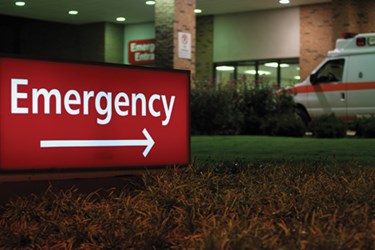EHR Adoption On The Rise In The ER

By Katie Wike, contributing writer

The CDC reports a dramatic increase in emergency room and ambulatory EHR adoption from 2006-2011.
The majority, 84 percent, of hospital emergency departments used an electronic health record system in 2011, according to a report from the CDC. Just four years earlier in 2007, only 19 percent of emergency departments had EHR systems. Seventy-six percent of outpatients departments also used EHRs by 2011.
Other key takeaways from the CDC report include:
- Adoption of a basic EHR system with a specific set of functionalities by EDs increased from 19 percent in 2007 to 54 percent in 2011.
- In 2011, 73 percent of hospital outpatient departments (OPDs) used an EHR system, up from 29 percent in 2006.
- Adoption of a basic EHR system with a specific set of functionalities by OPDs increased from 9 percent in 2007 to 57 percent in 2011.
- From 2007 through 2011, adoption of Stage 1 Meaningful Use objectives by EDs and OPDs increased.
- In 2011, 14 percent of EDs and 16 percent of OPDs had EHR technology able to support nine Stage 1 Meaningful Use objectives.
EHR Intelligence reports much of this increase is credited to the HITECH Act in 2009, which gave monetary incentives for adopting such technology. As part of the Health IT Success Stories series, the Office of the National Coordinator for Health Information Technology (ONC) shared the story of the University of Cincinnati (UC) Internal Medicine and Pediatrics emergency department.
“After our patients are discharged from the hospital or ED, our clinic is able to proactively reach out to them to make sure they understand their discharge plan and set up follow-up appointments as needed,” Dr. Jonathan Tolentino, an internal medicine and pediatrics physician at the clinic, told the ONC.
Along with follow up care, the clinic is able to use the EHR to determine which patients may need extra care after they leave the emergency department.
“The risk stratification system, combined with the ED alerts, not only helps us deal more aggressively with high-risk patients, but also helps us increase care coordination,” Dr. Tolentino went on to explain.
